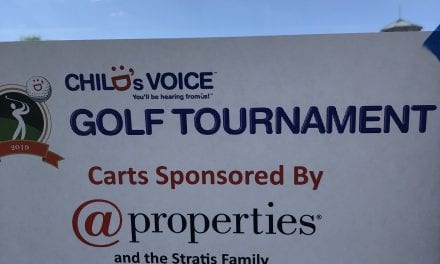Otonomy, Inc (Nasdaq: OTIC), a biopharmaceutical company dedicated to the development of innovative therapeutics for neurotology, announced positive top-line results from the Phase 2a clinical trial of OTO-413 in subjects with hearing loss. The randomized, double-blind, placebo-controlled trial demonstrated that a single intratympanic injection of 0.3 mg OTO-413, a sustained exposure formulation of brain-derived neurotrophic factor (BDNF), provided clinically meaningful treatment benefit versus placebo across multiple speech-in-noise (SIN) hearing tests as well as the Patient Global Impression of Change (PGIC) at consecutive time points (Days 57 and 85), according to the company. These results support the clinical activity of OTO-413 observed in the prior Phase 1/2 trial and provide a second, independent demonstration of the treatment potential of OTO-413 for patients over a broad range of hearing loss levels.
“The most common complaint of patients seeking treatment for hearing loss is difficulty hearing a conversation in a noisy setting,” said Barbara Shinn-Cunningham, PhD, Director, Carnegie Mellon Neuroscience Institute and Cowan Professor of Auditory Neuroscience, Biomedical Engineering, Psychology, and Electrical & Computer Engineering at Carnegie Mellon University. “Breakthrough research conducted over the last decade suggests that damage to cochlear synapses plays a role in this speech-in-noise hearing difficulty and that treatment with a neurotrophic factor, such as BDNF, offers potential for repair. I am encouraged by these results for OTO-413 and look forward to its continued development as an option for patients to regain functional hearing.”
The design of the Otonomy OTO-413 Phase 2a trial was the same as the previous Phase 1/2 trial. All subjects self-reported hearing difficulty in a noisy environment that was confirmed by SIN testing. Subjects could also have up to moderately severe hearing loss by standard audiometric testing. As in the Otonomy OTO-413 Phase 1/2 trial, multiple clinically-validated SIN hearing tests including Digits-in-Noise, Words-in-Noise, and the American English Matrix test were administered at baseline and following treatment. The assessment of treatment benefit was based on demonstration of a clinically-meaningful improvement from baseline versus placebo at both Days 57 and 85. The results below are for the 30 evaluable subjects (out of 33 total enrolled), which includes 20 treated with OTO-413 and 10 who received placebo.
Top-line results are provided below with additional details available online in the investor relations section of Otonomy’s website at: www.otonomy.com.
- 40% (8 of 20) OTO-413 subjects demonstrated a clinically-meaningful improvement on at least one of the three SIN tests at both Days 57 and 85 versus 20% (2 out of 10) for placebo.
- 15% (3 of 20) OTO-413 subjects demonstrated a clinically-meaningful improvement by two or more different SIN tests at both Days 57 and 85 versus 0% (0 of 10) for placebo.
- For the Words-in-Noise test that has been well-established and validated in hearing loss patients, 40% (6 of 15 with evaluable tests) OTO-413 subjects demonstrated a clinically-meaningful improvement at both Days 57 and 85 versus 0% (0 of 9 with evaluable tests) for placebo.
- Most of the patients enrolled in this trial also had moderate-to-severe high-frequency hearing loss measured with standard audiometric testing. The responder rate for OTO-413 was favorable in this subset as well with 41% (7 of 17) OTO-413 subjects demonstrating a clinically-meaningful improvement in at least one SIN test at both Days 57 and 85 compared to 13% (1 of 8) placebo subjects.
- The PGIC demonstrated a treatment benefit with 50% (10 of 20) OTO-413 subjects reporting an improvement from baseline at both Days 57 and 85 compared to only 10% (1 of 10) for placebo.
- Treatment with OTO-413 was well tolerated. There were no serious adverse events and no discontinued patients due to an adverse event (AE). 32% of OTO-413 and 46% of placebo subjects reported an AE, most of which were mild.
Based on these positive results, Otonomy intends to initiate a full dose-ranging OTO-413 Phase 2 trial in hearing loss patients by the end of 2022. This trial will also incorporate learnings from the ongoing higher dose evaluations that are assessing the tolerability and treatment activity of two higher doses of OTO-413: 0.75 mg and 1.50 mg, which is five times the dose evaluated in the Phase 2a trial. Results from the higher dose evaluation are expected in the second half of 2022.
“As an investigator in the OTO-413 study program, I am delighted to again see the treatment benefit of OTO-413 for patients across a broad range of hearing loss severity,” said Victoria Sanchez, AuD, PhD, Assistant Professor, Department of Otolaryngology – Head & Neck Surgery at the University of South Florida. “It is also encouraging to see the significant improvement in speech intelligibility of OTO-413 responders using the Words-in-Noise test, which has been extensively validated as an instrument to quantify the ability of listeners to understand speech in background noise among many hearing loss patient populations.”
“We are excited to announce these positive results that are important because they provide a second independent, placebo-controlled trial demonstrating the treatment benefit of OTO-413 in a broad hearing loss patient population,” said David A. Weber, PhD, president and CEO of Otonomy. “This study also furthers our understanding of the target patient population, speech-in-noise test performance, and study conduct considerations for future trials. We’re looking forward to reviewing results from the ongoing higher dose evaluations in the second half of this year and then initiating a full dose-ranging Phase 2 efficacy trial by the end of 2022.”
Source: Otonomy






